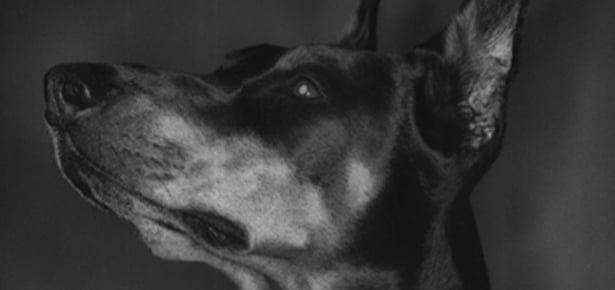

Wobbler Syndrome
Large Breed Disease: Wobbler Syndrome
Cervical Spondylomyelopathy, also known as wobbler syndrome, is a neurological condition in dogs that affects their cervical spine, or neck region. A compression of the spinal cord and nerve roots, wobbler syndrome gets its name from the characteristic “wobbly” walk that affected dogs typically display from the disease.
“There are two forms of cervical spondylomyelopathy,” said Dr. Megan Steele, a veterinary resident at the Texas A&M College of Veterinary Medicine & Biomedical Sciences. “There is a disc-associated form that causes ventral spinal cord compression and dorsal, lateral bone and joint proliferation causing dorsolateral spinal cord compression.”
Wobbler syndrome is typically a progressive disease most commonly found in larger dog breeds, such as Doberman Pinschers, Great Danes and Mastiffs.
“Symptoms can vary widely from mild neck pain to an inability to walk in all four limbs,” said Dr. Steele. “Often, pelvic limb weakness and ataxia, or weakness, is more severe than in the thoracic limbs. A classic, two-engine gait is seen in dogs with low cervical lesions causing a short, choppy gait in the thoracic limbs and a long, sweeping gait in the pelvic limbs.”
Other symptoms often include weakness, difficulty getting up from a lying ))position, and possible muscle loss. Clinical signs are typically slow and gradual in onset, though acute worsening can occur. If your dog appears to show signs of any of these, especially difficulty walking or any unusual neck pains, a trip to the veterinarian for a diagnosis is a recommended.
In order to properly diagnosis your dog for wobbler syndrome, your veterinarian may perform advanced imaging such as radiographs, computed tomotherapy (CT) and myelographs to characterize the degree of spinal compression. “A definitive diagnosis is best made from an MRI as this gives us the best information of what is happening to the spinal cord itself, a soft tissue structure,” said Dr. Steele.
Treatment for wobbler syndrome, like for many other disorders, is greatly dependent on the location and severity of the problem. Cervical surgical procedures are typically the recommended treatment option for the best chance of improvement, but as with any surgery, there is always a risk of complications. For affected dogs in which surgery is not appropriate, medical management is another reliable treatment option.
Medical management is a viable treatment option in dogs with mild clinical signs or dogs with spinal cord compression in multiple locations, or that have comorbidities making them poor surgical candidates. Medically treated dogs need to have restricted activity for at least two months, along with close observation and any other recommended therapy. The goals of medical management are to provide adequate pain control and hopefully delay or prevent disease worsening.
“There will be lifestyle changes, such as walking with a harness instead of a neck lead, minimizing rough play, and restriction of jumping and using stairs, that may need to be made,” said Dr. Steele. “Implementing these lifestyle changes, along with rehab and pain management, can have a success rate of around 50 percent.”
Dogs with progressive signs that are not responding to medical management are typically advised to undergo surgery. “Surgical success is around 80 percent and with severely affected animals is the treatment of choice,” said Dr. Steele. “The type and location of disease dictates the type of surgical procedure recommended. Some common procedures we perform include dorsal laminectomies, ventral slots and occasionally distraction fusion.”
Even after both surgery and medical management, some dogs with wobbler syndrome may never walk normally again. However, when combined with physical therapy and post-operative care, these treatments provide a considerable chance of improving your best friend’s overall quality of life.
About Pet Talk
Pet Talk is a service of the College of Veterinary Medicine & Biomedical Sciences, Texas A&M University. Stories can be viewed on the Web at vetmed.tamu.edu/pet-
Suggestions for future topics may be directed to editor@cvm.tamu.edu.
Join the newsletter and never miss out on dog content again!
"*" indicates required fields
By clicking the arrow, you agree to our web Terms of Use and Privacy & Cookie Policy. Easy unsubscribe links are provided in every email.





